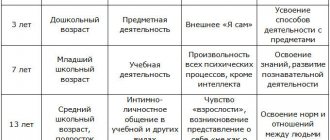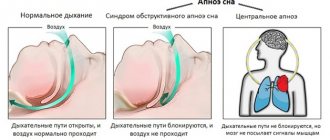The ability to understand the meaning of certain sensations in the body during panic attacks helps you learn to be less afraid of both the panic attacks themselves and their consequences. It is important to realize: everything that happens in the body during a panic attack is aimed at mobilizing the body to escape or attack. And by and large, it doesn’t matter to the internal organs when panicking - whether a person is experiencing severe fear because it seems to him that something will happen to him, or he decided to run away from his pursuers, or even decided to break some record , winning against everyone. For each person, the severity of discomfort in different parts of the body can vary greatly, so we will simply describe everything that happens.
The cardiovascular system
The main organ for intense physical activity is the muscular system, led by the heart. The heart beats accordingly more often (maybe up to 160 beats per minute) and more intensely. As the excitability of the heart muscle increases, extrasystoles (extraordinary contractions of the heart) may appear, which is felt as fading and interruptions in the functioning of the heart. Hence the thoughts and fear that something is wrong with the heart and it may not be able to withstand it, a heart attack, cardiac arrest...
Blood pressure increases due to vasoconstriction and more active work of the heart, which is felt by pulsation in the temples, in the neck and epigastrium (solar plexus area). This feeling scares many. It seems that the vessels may not withstand it and rupture, causing a stroke.
Due to the narrowing of small blood vessels, numbness and tingling appear in different parts of the body. There is an outflow of blood to the muscles and skin, which may be accompanied by chills and increased body temperature (usually no more than 37.5). With neuroses, this condition can be almost permanent, which forces many to stubbornly look for some kind of infectious disease. All this can also be accompanied by sweating caused by an increase in body temperature and dilation of skin blood vessels.
Main Causes of Nervousness and Trembling
The feeling of nervousness and (or) internal trembling is familiar to almost every adult. These sensations are observed in healthy people during periods of stress or threat of danger. Feelings of tension and anxiety in ordinary people are always accompanied by nervousness, a feeling of internal trembling, sometimes trembling of fingers, arms, and legs. In addition, these symptoms can be observed due to overwork. This is a manifestation of excitation of the nervous system, mainly its vegetative centers, designed to help the body cope with external threats and stress.
The main reasons for the manifestation of trembling and nervousness are the presence of formed mental disorders (most often - borderline mental states, post-stress disorders, anxiety states), the presence of organic or toxic lesions of the nervous system (more often with the manifestation of various complications of alcoholism, with the manifestation of withdrawal syndrome after drinking alcohol, drugs , drug addiction, etc.). Depending on the causes, the treatment of nervousness and yeast is wiped off according to individual principles.
Treatment of anxiety disorders.
Psychiatrists and psychotherapists (psychotherapists) are more interested in the sensations of nervousness and internal trembling as symptoms of illness (mental or internal organs) or any painful conditions.
Nervousness and inner tremors in life
Patient: Woman, 21 years old, university student, unmarried, no children, no bad habits, occasionally drinking small amounts of alcohol on holidays, resident of a big city. I contacted my therapist with a complaint:
“Lately I’ve been worried about my health, I don’t even know where to turn and what’s causing my ailments. The symptoms are: restlessness, sweaty hands, trembling noticeably when excited, constant internal tension, internal trembling, nervousness, aggressiveness, conflict with others, perhaps because of all this, low mood, a desire for complete loneliness. But most of all I am tormented by a general weak condition and a nasty internal trembling, the temperature constantly stays around 37-37.5, my legs often hurt (as if after prolonged stress or weakness and aches throughout the body), low blood pressure. In general, this state of affairs is simply exhausting. What could all this be connected with? I don’t drink, but I feel like I did after a month of heavy drinking.”
The therapist referred her to a psychiatrist or psychotherapist for consultation. She came in wondering why she needed a psychiatrist. The examination revealed the presence of anxiety-depressive syndrome, complicated by autonomic dysfunction. The treatment was carried out using complex methods: neurometabolic therapy, psychotherapy, a diet was prescribed, and an optimal daily regimen was selected. Relief of the acute phase of mental disorder in a day hospital lasted 5 weeks, after which acute symptoms did not appear. Transferred to home treatment, under the supervision of a psychotherapist with attendance at group psychotherapeutic sessions. After 6 months there was no need for treatment or maintenance therapy. A general regimen is recommended, following a non-strict diet and daily routine. A stable mental state has been observed for three years.
Feeling of nervousness and internal tremors
It can be observed in many mental disorders and behavioral disorders, ranging from asthenic conditions to severe endogenous diseases, with alcoholism and drug addiction, with the consequences of traumatic brain injuries, epilepsy and other disorders of higher nervous activity. In the case of an asthenic state, nervousness is often accompanied by vegetative symptoms: palpitations, rapid or uneven pulse, dry mucous membranes or increased sweating, trembling (or a feeling of internal trembling), a feeling of internal waves (“hot flashes”).
The feeling of increased nervousness can also be one of the first symptoms of many endogenous diseases (from depression to schizophrenia), and can appear long (several years) before the main painful manifestations, which will be felt by a person and reduce the quality of his life. This is explained by the fact that most painful biochemical changes during diseases in the brain occur slowly, and in cases where the metabolic processes of the brain (for example, the exchange of neurotransmitters) are not severely disturbed, or are just beginning to be disturbed. The body immediately reacts to this by trying to “put up” defense mechanisms, which manifests itself in feelings of anxiety or nervousness. When changes become more profound over time, the main manifestations of the disease occur. In these cases, it is important to correctly assess the manifestation of feelings of nervousness and feelings of internal trembling. Whether it is just a healthy reaction to stress or fatigue, or whether it may indicate the possibility of developing a mental disorder in the future, this can only be determined by a psychotherapist, only in a face-to-face consultation.
Muscular system
Muscle contraction:
- a feeling of pressure, compression appears on the head, as if “it was being squeezed by a hoop, as if a helmet was on...” (for some this makes one think of a stroke);
- a feeling of a lump may appear in the throat area, and in some cases the swallowing process is difficult (hence the thoughts and fears that food may go “down the wrong throat” or thoughts about cancer in this area);
- sensations of tingling, pressure, burning appear in the chest due to spasm of both the intercostal muscles and the back muscles (hence the thoughts and fear of a heart attack, especially if these sensations are felt in the left side of the chest);
- trembling of the body, arms, legs, head (hence the fear that they will notice and think something bad).
How does nervousness and internal trembling manifest?
Each person can feel the manifestations of nervousness differently, so it makes no sense to list the numerous variations of this painful feeling. Increased nervousness is considered a symptom of a disorder of higher nervous activity. Yeast manifestations also have many different variations. More often it manifests itself in the form of internal trembling in the chest, “fluttering”, internal vibration, “buzzing” inside. Less commonly, these symptoms may appear more locally, for example, a person may feel a trembling in the hand or tremors in the leg. At the same time, it is not uncommon to observe muscle twitching in this area of the body.
Related complaints
- Feeling of constant or frequent anxiety.
- A feeling of constant or frequent fear.
- Strong, rapid heartbeat or extrasystoles.
- Feeling tense or on edge.
Brain
Constriction of blood vessels in some parts of the brain gives two symptoms of the complex:
- feeling of weakness, faintness, dizziness (hence thoughts and fears of fainting);
- change in perception: everything around you is seen as if through a veil, through glass, it may seem somehow not real, your own body may seem changed, and you may perceive yourself as not yourself (these are symptoms of derealization and depersonalization, hence thoughts and fears about madness and loss of control ).
Hysterical neurosis
The clinical picture of hysteria is characterized by increased lability of emotions and the transition of the mental component to the somatoneurological one. This is the only form of neurosis when qualitative changes in consciousness are possible. Almost all symptoms of hysteria are protective for the patient, corresponding to a specific psychotraumatic situation. They bring a certain moral benefit to the individual, since they provide an opportunity to get rid of another difficult experience. Therefore, hysteria can be considered as a kind of protective phenomenon that occurs under the influence of a super-powerful stimulus.
Example: a mother received unexpected news about the tragic death of her son; while waiting for the body to be brought, she thought with horror that she would not be able to see him dead, and suddenly became blind; After a while, the hysterical blindness passed.
Emotional lability during hysteria manifests itself in a sharp change in emotions and their inconstancy. But, unlike neurasthenia, they are indicated by high intensity and duration. The patient, who a minute ago was crying bitterly and in deep despair, without much effort not only calms down, but also easily comes into a good mood. Such lability of emotions leads to instability in desires, intentions, behavior, likes and dislikes. In addition to emotional lability, a clear symptom of hysteria is easy suggestibility - both self-suggestion and the ability to be suggested by others.
The most striking reaction to a stimulus from the motor system will be a hysterical attack. Seizures do not occur when no one is near the patient, and are not accompanied by a sharp fall with bruises and injuries. Movement disorders have a pronounced neurotic character and coincide with the content of the patient’s experiences. He falls, chaotically swings his arms and legs, hits them on the floor, bends over, shouts out individual words. The seizure lasts from several minutes to hours. Unlike epileptic paroxysm, hysterical paroxysm is not accompanied by a clear violation of muscle tone, spasm of the sphincters with their relaxation and incontinence of urine and feces, the reaction of the pupils to light is preserved, and treatment is perceived adequately. After the attack, only a vague memory of it remains.
One type of hysteria is a disorder of consciousness under the influence of mental trauma. The perception of the surrounding reality is distorted. Behavior takes on childlike features, helplessness, and elements of fake dementia - pseudodementia. Some experience neurological symptoms: decreased sensitivity, trembling hands, hysterical deafness or muteness.
Significant strength and lability of emotions can sometimes cause a deviation of consciousness such as twilight stupefaction (hysterical delirium) and painful constriction (hysterical unconsciousness). The twilight state of hysteria usually demonstrates a pure type of painfully narrowed consciousness without stupor or other signs of its disturbance.
Causes
The main causes of neuroses are mental trauma and stress. They can be provoked by certain life circumstances, diseases, alcohol or drug use.
A neurotic breakdown is possible for any person, but its nature and form are determined by a whole group of factors. On the one hand, the formation of neurosis depends on the individual characteristics of the individual, hereditary selective tolerance to external influences, and the level of adaptive capabilities of the body. On the other hand, the occurrence of a particular neurosis is determined by the nature of the mental trauma. It can be sudden (death of a loved one) or arise as a result of long-term unfavorable conditions (conflict and tension in the family, at work).
But such situations do not always lead to neurosis. It all depends on how important it is to a person and how he feels about it. Favorable factors include mental trauma suffered in childhood, upbringing in a negative environment, and frequent somatic illnesses.
How to diagnose?
Pulmonary hyperventilation syndrome is very difficult to diagnose; it is arrived at by the method of exceptions, since the symptoms are very similar to other diseases. Most often, the patient needs to undergo a number of examinations.
But the most effective method for making a diagnosis is capnography. The equipment calculates the concentration of carbon dioxide in exhaled air. If the indicators are normal, the occurrence of breathing problems is considered accidental. Otherwise, respiratory neurosis is diagnosed.
Also, to more accurately determine the manifestation of symptoms, a special questionnaire is used. The table lists all the symptoms of dysfunctional breathing, and the patient must mark the degree of manifestation of each indicator according to points.
Neurotic depression
Neurotic depression is typically characterized by a depressed state with some inhibition of psychomotor reactions and thinking. There are monotonous depressive memories, pessimistic views of the future, and fixation on the traumatic situation. There is a tendency to tearfulness, irritability, decreased appetite, sleep disturbance, sensitivity (excessive emotional sensitivity).
Neurotic depression does not reach the depth of psychosis, is reversible, and goes away when a traumatic situation is analyzed or under the influence of treatment.
Diagnostics
In each specific case of a neurotic disorder, a varied pattern of symptoms of different types of neurosis may be demonstrated. All this can be accompanied by various symptoms of mental and somatic disorders, which creates certain difficulties in diagnosis. Therefore, the qualifications of the attending physician, his medical experience and professional skills are so important.
The collected anamnesis is of great importance - the patient’s complaints, his description of the nature and intensity of the symptoms, the time of their manifestation. It will also be important to talk with loved ones, since they can often provide valuable information. Medical observation in a hospital setting may be required to confirm or refute the diagnosis.
It is necessary to carefully check the level of hormones in the body, since the development and course of depression or neurosis are strongly influenced by hormones. This is especially true for thyroid hormones; even minor changes in their levels, which are difficult to detect using conventional tests, can have a very significant effect on well-being. If a hormonal imbalance is detected, proper hormonal therapy must be initiated. In some cases, normalization of thyroid function leads to a complete cure for neurosis.
Differentiated diagnosis is important when you need to be able to distinguish one pathology from another. Provided that neuroses are often accompanied by somatic symptoms, the doctor will prescribe an appropriate examination. In addition to general laboratory tests (blood, urine), specific studies (hormonal levels) may be required. If a brain disorder is suspected, magnetic resonance imaging (MRI) or computed tomography (CT) is recommended.
Drug therapy
The course of neurosis is associated with a simultaneous decrease in the level of brain serotonin, therefore long-term use of antidepressants - selective serotonin reuptake inhibitors - is prescribed for treatment. At the initial stage of treatment with antidepressants, their adverse reactions may occur, and the patient’s condition may worsen. In view of this, it is important not to stop taking the prescribed treatment, but only to reduce the dose of the drugs. Then, as tolerance improves, the dosage is gradually increased to the recommended values. Over time, the symptoms of neurosis decrease and the patient's condition improves.
Important: the antidepressant must be selected by a doctor! The selection takes into account the individual tolerability of the drug and its effectiveness for specific neurotic symptoms.
For the treatment of neuroses accompanied by insomnia or poor sleep, sedative and hypnotic antidepressants are prescribed. Sometimes, with great caution and in small doses, in short courses (to avoid addiction), tranquilizers are prescribed. When treating neuroses with concomitant weakness, memory loss, and asthenia, nootropic drugs are used. The duration of treatment is usually several months; if necessary, the course must be repeated.









